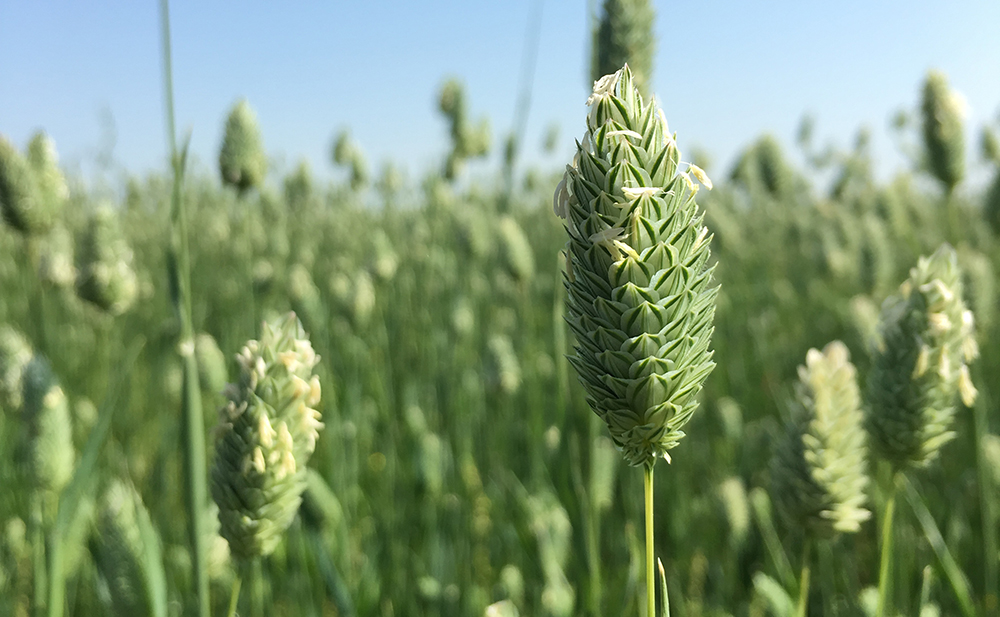Demand declining | Shipments to Mexico are down and competition is coming from Argentina
Canaryseed growers should not expect birdseed prices to take flight soon, says the head of a Saskatoon grain brokerage company.
Prices are likely to remain in the 25 to 28 cents per pound range unless western Canadian production falls well below normal levels this year, said Bobby Leavins, operations manager at Rayglen Commodities.
Leavins told a Crop Production Week meeting Jan. 7 that selling into the current market is akin to pushing a rope.
“I used this exact same analogy last year when I did (a similar) presentation for mustard growers,” he said.
Read Also

Flax sector sees omega-3 opportunity
SASKATOON — A global shortage of omega-3 oils could be an opportunity for the flax sector, says an industry official….
“Things just aren’t changing a whole bunch (for canaryseed). We seem to be stuck in a trough, and there’s not a lot of up and not a lot of down. That 26 or 27 cents seems to be where it’s sitting. Buyers aren’t panicking.… They’d almost rather go without than buy stuff that’s too expensive.”
However, Leavins said Canadian canaryseed acreage is expected to rebound significantly this year.
Stocks are tight after harvesting small crops in 2011 and 2012, and farmers are prepared to rebuild supply and wait for market rallies.
Canaryseed is a relatively inexpensive crop to grow and that is a consideration for many farmers when rising input prices are making crops such as canola an expensive proposition.
Also, disappointing canola and wheat yields in 2012 in some areas have heightened growers’ aversion to risk.
As a result, some analysts think total canaryseed acreage could expand by 75,000 to 80,000 acres this year.
Agriculture Canada estimated harvested area at 300,000 acres in 2012 and 235,000 in 2011.
“I’m expecting 375,000 acres of canaryseed (in 2013),” Leavins said.
“It’s a lot higher than we’ve seen in the last little while, but with the issues that we’ve seen in some of the other ag markets and the problems that we’ve had with expensive inputs, it just makes sense.”
Canadian production accounts for as much as 80 percent of global canaryseed exports in a normal year.
Saskatchewan farmers produce almost 90 percent of the Canadian crop.
Leavins said the Canadian industry is aiming for exports of 10,000 to 12,000 tonnes per month in 2012-13 and total annual shipments of 130,000 to 140,000 tonnes.
Unlike most commodities, demand for canaryseed is declining.
Annual shipments to Mexico are shrinking, and new competition from producers in Argentina is also affecting exports.
Leavins said Canadian export volumes to Mexico are 60 to 70 percent of what they were a few years ago.
Agriculture Canada estimated Canadian canaryseed production in 2012 at 146,000 tonnes, up 13 percent from 2011.
Stocks-to-use ratio was estimated at 12 percent entering the 2012 harvest.
Some market analysts say stocks are even tighter than that.
Leavins said a major fluctuation in western Canadian production could push prices out of their current range, but markets are likely to remain flat until that happens.
Producers not prepared to sit on new crop supplies and wait for a rally should set their price targets in the 25 to 28 cent range.
He advised growers to move 75 percent of their stocks at 28 cents and sit on the rest.
At 25 cents, growers with immediate cash flow needs should consider committing a portion of their 2013 production, he added.
“If someone shows you a 25 cent contract, I wouldn’t be scared to put 50 percent of my acres down on a 10 bushel contract,” he said.
Buyers and sellers in the global canaryseed trade are mindful of risks associated with the crop.
Delivery problems, trade disruptions and extra costs associated with cleaning and processing birdseed have made importers and exporters more wary of their financial exposure.
Current prices reflect that aversion to risk.
European buyers are living hand to mouth, demanding quick delivery when inventories are depleted.
“I think we really have to support the values that we’re at,” Leavins said.
“As a farmer, sometimes when the boat comes, you’ve got to fill it up. You can’t pass it up in the night. If a guy’s come to buy your canaryseed … and you say no … it’s not like he’s going to feed his bird twice as much the next day.… It’s just that you’ve lost another day of demand.”















